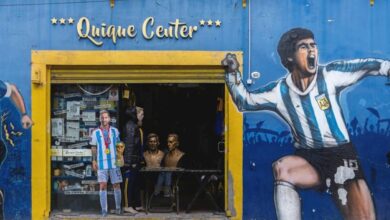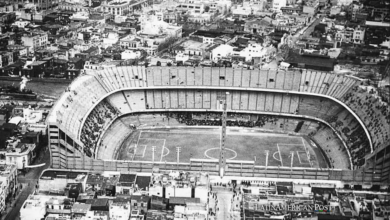Franco Colapinto: Argentina’s New Hope in Formula 1

Franco Colapinto’s arrival at Williams F1 marks a historic moment for Latin American motorsport. The Argentine driver’s debut sparks excitement, highlighting the region’s growing influence in Formula 1 as new sponsors and talents reshape the sport’s global dynamics.
Formula 1, a sport steeped in European tradition, has steadily embraced a global audience, and Latin America is becoming a key player in this expansion. With the arrival of Franco Colapinto at Williams Racing, the spotlight shifts to Argentina, a country with a deep motorsport history but a relatively quiet presence in Formula 1 in recent decades.
In 2024, the decision by Williams to bring Colapinto on board as their second driver mid-season has not only stirred excitement among F1 enthusiasts but also marks a significant moment for Latin American motorsport. Coupled with the partnership with Mercado Libre, one of Latin America’s largest e-commerce giants, Colapinto’s rise signals a broader movement—one where the region is playing an increasingly prominent role in shaping the future of Formula 1.
Lattin America’s F1 Legacy
Latin America’s passion for motorsport runs deep, with countries like Argentina, Brazil, and Mexico producing some of the most iconic figures in racing history. Argentina’s connection to Formula 1 dates back to the 1950s, with Juan Manuel Fangio becoming a five-time world champion, establishing the nation as a motorsport powerhouse. Fangio’s dominance during F1’s early years not only put Argentina on the map but also ignited a love for racing that would be passed down through generations.
Brazil, too, has left an indelible mark on Formula 1, with legendary drivers like Ayrton Senna and Nelson Piquet capturing multiple world championships. Senna, in particular, became a global icon revered for his skill, charisma, and relentless pursuit of excellence. Mexico, meanwhile, boasts Sergio “Checo” Pérez, who is currently one of the top drivers in the sport, consistently contending at the front of the grid with Red Bull Racing.
Despite this rich history, Argentina has struggled to maintain a consistent presence in Formula 1 since Fangio’s era. Over the years, economic challenges and a lack of infrastructure have stunted the country’s ability to produce F1-ready talent. However, the arrival of Franco Colapinto at Williams marks a potential revival of Argentina’s place in the sport. His debut is a personal achievement and a symbolic return for Argentina to the global motorsport stage.
Rising Star and Williams’ Big Bet
At just 21 years old, Franco Colapinto has quickly become one of the most promising talents in motorsport. His journey to Formula 1 has been a testament to both his raw talent and resilience. Having raced in various junior categories, including Formula 3 and Formula 2, Colapinto’s impressive performances, particularly his P6 finish in the F2 championship with wins in both Sprint and Feature races, caught the attention of Williams Racing.
Williams team principal, James Vowles, clarified that Colapinto was not just brought in because of sponsorship connections. Colapinto’s F2 performance placed him ahead of other notable prospects, such as Kimi Antonelli and Oliver Bearman, who are highly regarded in the F1 feeder series. Vowles recognized Colapinto’s potential and acknowledged that while placing him in the deep end of Formula 1 mid-season was a bold move, it was a calculated one.
Colapinto’s debut with Williams comes when the team is rebuilding its legacy. Once a dominant force in Formula 1, Williams has recently struggled to recapture its former glory. However, the team’s recent investments in its driver academy and Colapinto’s entry suggest that Williams is committed to a long-term strategy for growth and success. For Colapinto, the opportunity to drive for Williams represents a personal milestone and the chance to carry the hopes of Argentina and Latin America on his shoulders.
Latin America’s Business Power in F1
Alongside Franco Colapinto’s rise, Williams has secured a landmark partnership with Mercado Libre, Latin America’s largest e-commerce and digital payments company. This partnership is a significant signal of how Latin America’s economic power is starting to influence Formula 1. Mercado Libre, a company listed on the NASDAQ and named one of Time magazine’s 100 most influential companies in 2023, joins Williams as a sponsor, further cementing the team’s ties to the Latin American market.
Williams team boss James Vowles emphasized the significance of this partnership: “It is fantastic to welcome Mercado Libre into Formula 1 as a partner with Williams Racing. Mercado Libre is one of the most important and trusted brands in Latin America, and their decision to partner with us demonstrates F1’s position as a truly global sport.”
This partnership brings significant financial backing to Williams and taps into the growing fanbase in Latin America. Formula 1 has seen an explosion in popularity across the region, driven in part by the success of Netflix’s Drive to Survive series, which has introduced millions of new viewers to the sport. Mercado Libre’s involvement in F1 speaks to the region’s growing commercial importance in the global motorsport landscape.
In the broader context, Latin American companies like Mercado Libre joining Formula 1 signals a shift in how sponsorship deals are structured. No longer are F1 sponsorships dominated solely by European or American brands. The rise of Latin American businesses in the sport reflects the region’s increasing economic influence and appetite for international exposure.
What Colapinto’s Rise Means for Latin American F1 Fans
For Latin American motorsport fans, Franco Colapinto’s debut in Formula 1 is more than just another young driver getting his break—it’s a moment of pride and a sign that the region’s racing heritage still has a future on the global stage. Colapinto’s arrival at Williams adds fresh excitement for fans who have long celebrated the successes of drivers like Juan Manuel Fangio, Ayrton Senna, and Sergio Pérez.
Argentina, in particular, has been waiting for a new driver to emerge since the golden era of Fangio. The country’s passion for motorsport has never waned despite the absence of a consistent Argentine presence in Formula 1. Colapinto represents the hope that Argentina can become a contender in the sport again. His rise through the ranks of F2 and now his debut in F1 has reignited the dreams of Argentine fans, who see him as the torchbearer for the next generation of Latin American talent.
Colapinto’s success could also inspire a new wave of drivers from across Latin America to pursue careers in motorsport. Countries like Brazil, Mexico, and Argentina already have strong racing cultures. Colapinto’s journey proves that with the proper support and opportunities, Latin American drivers can reach the pinnacle of motorsport.
Moreover, Colapinto’s rise coincides with a broader trend of Latin American influence in Formula 1. Mexican driver Sergio Pérez’s success with Red Bull Racing has already helped to grow the sport’s following in Mexico. At the same time, the Brazilian Grand Prix remains one of the most celebrated races on the F1 calendar. With the addition of Colapinto, fans in Argentina and across the region now have another reason to tune in, cheer, and dream of Formula 1 glory.
Franco Colapinto’s entry into Formula 1 marks a critical moment for him personally and Latin America. His rise represents the latest chapter in a long history of Latin American contributions to motorsport, following in the footsteps of legends like Juan Manuel Fangio and Ayrton Senna. With the backing of Mercado Libre and the support of a passionate fanbase, Colapinto is poised to carry the hopes of a region into the future of Formula 1.
As Formula 1 expands its global footprint, Latin America’s influence on the sport—both on the track and in the business world—is becoming increasingly significant. For Williams Racing, the addition of Colapinto and the partnership with Mercado Libre are not just moves for the present but investments in a future where Latin American talent and economic power play an even more significant role in shaping the sport’s direction.
Also read: Argentinean Messi’s Return is Inter Miami’s Weapon for MLS Playoff Glory
All eyes will be on Colapinto as he takes on the challenge of competing in Formula 1. For Argentina, his journey is more than just a racing career—it’s a new chapter in the country’s storied history with motorsport.





